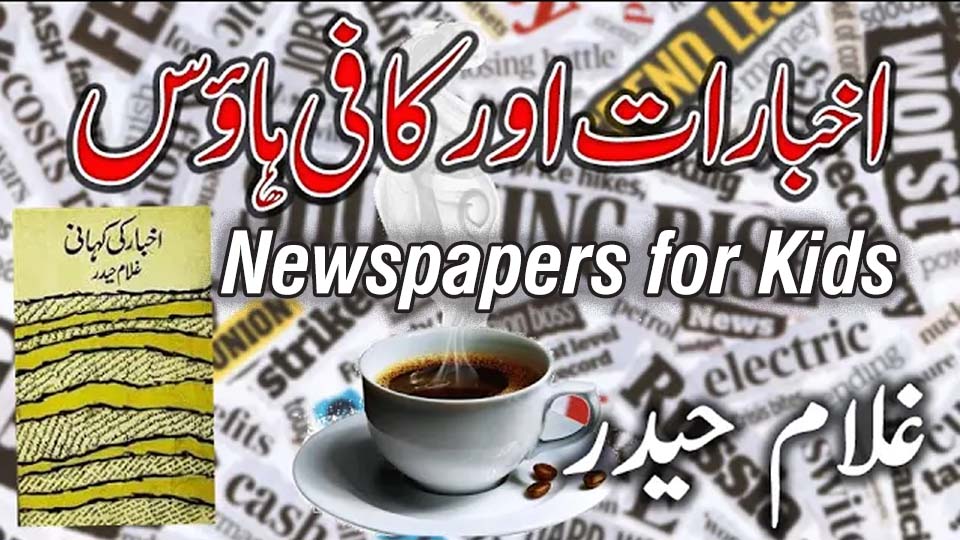Newspapers for Kids are more than just a source of daily news. In today’s digital era, where TV, radio, and social media dominate, the role of newspapers in shaping young minds remains significant. For children, newspapers are not only informative but also an effective way to develop reading habits, curiosity, and awareness about the world.
In this blog, we explore why newspapers remain important for children, how they aid in learning, and the benefits they bring to the next generation.
Why Newspapers for Kids Still Matter
Despite the widespread use of modern media, newspapers continue to hold cultural and educational value. For kids, reading a newspaper can:
* Build a habit of daily reading.
* Improve vocabulary and language skills.
* Provide knowledge about current events in a clear and concise manner.
Newspapers are not just records of events; they are mirrors of society. They capture traditions, values, and the pulse of a nation’s progress.
Educational Value of Newspapers for Kids
Children are naturally curious. Newspapers fulfill this curiosity by:
* Introducing them to real-world issues.
* Teaching them how societies function.
* Helping them understand history and culture.
Books like Akhbar Ki Kahani (The Story of Newspaper) written by Ghulam Haider, highlight the journey of newspapers in simple language for young readers. This book was published by the National Council for Promotion of Urdu Language (NCPUL), New Delhi, to ensure that children are introduced to quality literature in Urdu. Such initiatives show that newspapers are not only informative but also entertaining for children.
Inspiring Research and Critical Thinking
Newspapers for Kids inspire children to ask questions. By reading stories of science, technology, environment, and social changes, kids learn to explore and investigate further. This habit encourages:
* Critical thinking skills.
* A passion for research.
* Awareness of social and cultural issues.
For example, when children read about global events, they start connecting dots between local and international affairs.
Historical and Cultural Importance
Ghulam Haider, a renowned Urdu writer, emphasized that newspapers are like a daily-written document of civilization. His book explains how humans evolved from spoken words to written texts, and eventually to printed newspapers.
For kids, understanding this journey is important because it makes them realize that newspapers are not just pieces of paper—they are carriers of collective human memory.
Social Life and Newspapers
An interesting chapter from Akhbar Ki Kahani is about “Newspaper and Coffee Houses.” In 19th-century Europe, people gathered in coffee houses not only to drink coffee but also to read newspapers. This social habit helped spread awareness and discussions.
Today, when kids read newspapers, they also share stories with family and friends, strengthening social bonds and communication.
Amazing Benefits of Newspapers for Kids
To summarize, here are some amazing benefits of newspapers for children:
1. Improve reading and writing skills.
2. Enhance general knowledge.
3. Teach discipline and consistency.
4. Encourage social awareness.
5. Spark creativity and research habits.
These benefits show that newspapers are not old-fashioned—they are timeless tools of learning.
Final Thoughts
In conclusion, Newspapers for Kids are essential for education, awareness, and personality development. While technology provides instant news, newspapers offer structured, reliable, and meaningful content that children can trust. Ghulam Haider’s contributions through books like Akhbar Ki Kahani prove that children’s literature can connect history, culture, and journalism in a fascinating way.
Parents and teachers should encourage kids to read newspapers regularly. After all, a child who reads the newspaper today becomes a more informed, thoughtful, and responsible citizen tomorrow.
If you’re interested in reading this book, click the link below for a free download.
https://drive.google.com/file/d/1eUvFKNoOybm0c8x8PwGdwISZxEUbP5zT/view?usp=sharing
If you’d like to listen to this book in audio format, click the CONTACT button below to get in touch with the AwazeUrdu team to order the audiobook.
You can also watch the same video on these social media platforms.
دورِ جدید میں اگرچہ ٹی وی، ریڈیو اور سوشل میڈیا نے خبروں کے ذرائع کو وسیع کر دیا ہے، مگر اخبار کی اہمیت آج بھی کم نہیں ہوئی۔ اخبار محض خبروں کا ذخیرہ نہیں بلکہ یہ روزمرہ زندگی کا آئینہ دار ہے جو قوموں کی تہذیب و تمدن کو محفوظ کرتا ہے۔ خاص طور پر بچوں کے لیے اخبار پڑھنا نہ صرف معلوماتی ہے بلکہ ان کے اندر مطالعے کی عادت، تحقیق کا شوق اور حالاتِ حاضرہ سے باخبر رہنے کا ذوق بھی پیدا کرتا ہے۔ اسی ضرورت کو مدنظر رکھتے ہوئے قومی کونسل برائے فروغِ اردو زبان، نئی دہلی نے اخبار کی کہانی شائع کی، جسے غلام حیدر نے بچوں کے لیے دلچسپ اور سادہ انداز میں تحریر کیا۔ یہ کتاب بتاتی ہے کہ اخبار ہماری زندگی کا لازمی حصہ کس طرح بنا اور اس نے معاشرتی شعور کو کس طرح جِلا بخشی۔
غلام حیدر اردو کے ایک ممتاز ادیب ہیں جنہوں نے ادبِ اطفال کو اپنی زندگی کا مشن بنایا۔ جامعہ ملیہ اسلامیہ اور علی گڑھ مسلم یونیورسٹی سے تعلیم حاصل کرنے کے بعد وہ محقق افسر کے طور پر سرکاری خدمات انجام دیتے رہے۔ اردو، انگریزی، ہندی اور فارسی پر عبور رکھنے والے غلام حیدر نے سترہ سے زائد کتابیں تصنیف کیں جن میں پیسے کی کہانی، خط کی کہانی، بینک کی کہانی اور اخبار کی کہانی نمایاں ہیں۔ انہوں نے بچوں کا ادبی ٹرسٹ قائم کر کے نئی نسل کے لیے معیاری ادب فراہم کیا اور ان کی خدمات کے اعتراف میں انہیں اردو اکادمی، ساہتیہ اکادمی اور دیگر اداروں کی جانب سے ایوارڈز بھی ملے۔
کتاب اخبار کی کہانی میں صحافت کے ارتقائی سفر کو آسان زبان میں بیان کیا گیا ہے۔ اس میں بتایا گیا ہے کہ انسان نے بے ربط آوازوں سے گفتگو، پھر تحریر اور مطبوعہ کتاب تک کا سفر کیسے طے کیا اور کس طرح یہ سلسلہ اخبار کی ایجاد پر منتج ہوا۔ کتاب اخبار کی ابتدا، اس کے ارتقا، دنیا بھر کے واقعات کی عکاسی اور ہندوستانی اخبارات کے فروغ کے ساتھ ساتھ جنگِ آزادی میں اردو صحافت کے کردار پر بھی روشنی ڈالتی ہے۔ یہ محض تاریخ دہرانے کے بجائے اخبار کی معاشرتی اور تہذیبی اہمیت کو اجاگر کرتی ہے اور بچوں کو یہ احساس دلاتی ہے کہ اخبار ایک روزانہ لکھی جانے والی دستاویز ہے جس میں انسانی تہذیب کا عکس محفوظ ہوتا ہے۔
اسی کتاب کا ایک باب “اخبار اور کافی ہاؤس” آوازِ اردو نے اپنی ایک ویڈیو میں پیش کیا ہے، جو اخبار اور سماجی زندگی کے گہرے تعلق کو ظاہر کرتا ہے۔ انیسویں صدی کے یورپ میں جب کارخانے قائم ہوئے اور تعلیم عام ہوئی تو لوگوں میں خبروں کا شوق بڑھا۔ اس زمانے میں اخبار مہنگے تھے، لوگ کرائے پر پڑھتے تھے یا کافی ہاؤسز میں بیٹھ کر مطالعہ کرتے تھے۔ لندن میں صرف کافی پینے کے مراکز ہی سولہ سو تک پہنچ گئے تھے، جہاں لوگ چائے یا کافی کے ساتھ ساتھ اخبار بھی پڑھتے اور تبادلۂ خیال کرتے۔ یہی وہ دور تھا جب اخبار کی ترقی نے تیزی پکڑی، بڑے شہروں میں رپورٹر تعینات ہوئے، آرٹسٹوں کو شامل کیا گیا اور اخباروں کی شکل آج کے اخبارات سے مشابہ ہونے لگی۔ یوں کافی ہاؤسز نے اخباروں کی ترویج میں اہم کردار ادا کیا اور اخباروں نے معاشرتی شعور کو وسعت دی۔
یوں اخبار کی کہانی محض ایک مطالعہ نہیں بلکہ قاری کو اس سفر کا حصہ بنا دیتی ہے جس میں اخبار ایک ضرورت کے طور پر سامنے آتا ہے۔ یہ کتاب بچوں کو نہ صرف اخبار کی اہمیت سے روشناس کراتی ہے بلکہ ان میں مطالعے اور تحقیق کا شوق بھی پیدا کرتی ہے۔ یہی اس کا اصل مقصد ہے اور اسی میں اس کی کامیابی پوشیدہ ہے۔

